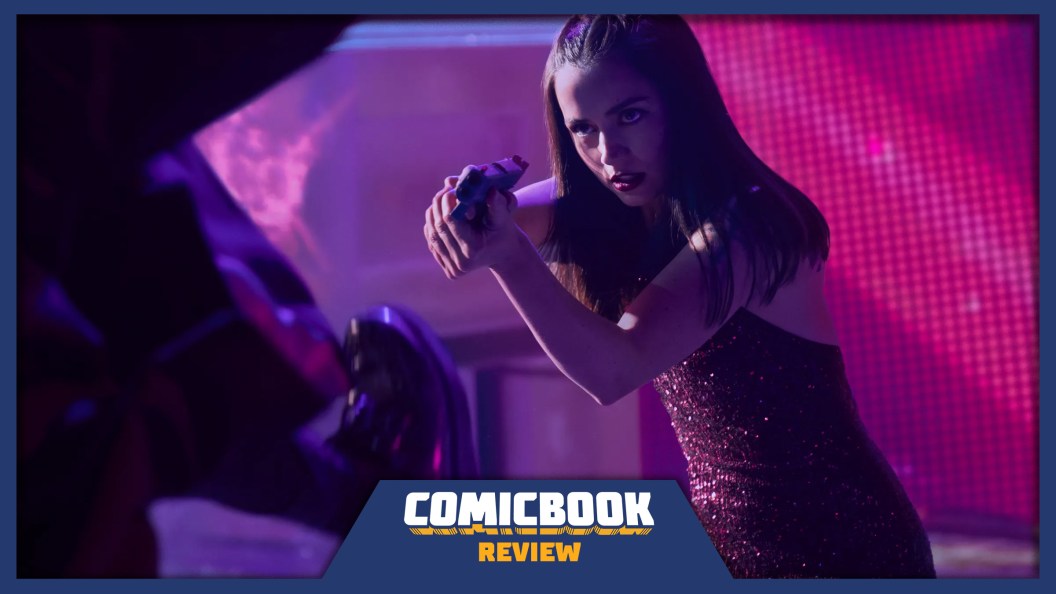
The original John Wick largely flew under the radar during its development, as Keanu Reeves had starred in a handful of action movies in the preceding years and director Chad Stahelski and writer Derek Kolstad weren’t entirely household names. The movie was a sleeper hit, but with each passing year, more audiences became impressed by the sympathetic storyline and ambitious action sequences, to the point that the franchise has earned not only four installments, but also the all-new spinoff From the World of John Wick: Ballerina. With the impact of the John Wick series being seen in virtually every action movie from the past decade, Ballerina gets off to a rocky start by feeling like yet another imitator, though it eventually finds the right narrative components to deliver the kind of inventive combat this franchise is known for.
With her family being murdered by mysterious killers at a young age, Eve (Ana de Armas) joins the Ruska Roma to make a living as an assassin. During a mission, Eve discovers a clue that could lead her to discovering who’s responsible for the death of her family, and much John Wick in his own storyline, she embarks on a path of revenge that could betray the twisted code of ethics followed by assassination organizations, putting a target square on her back.
On paper, there wasn’t a lot about the original John Wick that set it apart from countless hitman movies that came before it. Instead, it was an effective combination of tried-and-true action tropes — a sympathetic antihero, a stoic lead performance, mysterious mythology, and unrelenting brutality — to create effective counterprogramming to the superhero movies dominating the cinematic landscape. Since then, films like Atomic Blonde, Nobody, Violent Night, Bullet Train, and Hotel Artemis have attempted to replicate that formula to varying degrees of success. While many of those films have some behind-the-scenes connections to the original John Wick, resulting in a mixed bag of success, even Ballerina struggles to live up to its namesake by borrowing too much from the source material and feels like yet another direct-to-streaming knockoff.
The first act of Ballerina features a murdered family inspiring a life of killing, a largely reserved main character, and combat training sequences. As Eve graduates to becoming a full-blown killer, we see her invading nightclubs and fancy hotels to carry out her missions, with such environments becoming a staple of this franchise. Eve’s rendezvous with Daniel (Norman Reedus) offers more clues about who killed her family, with this character contributing little more to the story than “go here to continue your mission.” Ballerina marks writer Shay Hatten’s third outing in the John Wick franchise, though it’s his first solo writing credit after having co-writers on John Wick: Chapter 3 – Parabellum and John Wick: Chapter 4. The structure of the first two acts of the story feels both convoluted and redundant, not really accomplishing anything to make Ballerina feel unique. With Ballerina being directed by Len Wiseman, who previously helmed Underworld, Live Free or Die Hard, and the Total Recall reboot, in addition to only earning a fraction of the creativity behind more successful John Wick efforts in writer Hatten, it’s easy to see why so much of this movie feels like a misguided attempt to replicate the effectiveness of previous films without knowing why those movies were a success.
Hatten and Wiseman shouldn’t entirely be to blame for their middling start to an extension of the Wick franchise, as the Peacock series The Continental: From the World of John Wick also attempted to expand the world to a lukewarm reception from audiences and critics. Additionally, Hatten has previously expressed that he wrote the script for Ballerina after watching the trailer for John Wick: Chapter 2, only for the movie to be rewritten to be fully incorporated into the franchise, ultimately explaining how the premise could feel like an imitator as opposed to its own concept. Given that we’ve also seen movies like Black Widow and Red Sparrow borrow the idea of ballet-trained assassins, there’s really not much about Ballerina that feels fresh and, frankly, the first half of the movie doesn’t.
Luckily, the events of the back half of the narrative borrow a page from films like Assault on Precinct 13, Die Hard, and The Raid, putting Eve in a location where she is surrounded by killers and with no escape plan. During Eve’s training earlier in the film and as seen in trailers, she’s reminded that due to her size, she’ll never beat most male assassins, so it’s up to her to change the rules of combat. The first half of the movie doesn’t explore this theme quite as much, while the second half gets to depict Eve’s inventiveness more fully. From grenades to flamethrowers to ice skates, Eve uses anything in her proximity to take out threats, many of which approach her with weapons more traditionally associated with assassins.
One major question with any sequel, reboot, or spinoff is what a new installment can bring to the franchise that’s different from what came before it. At the start, there’s little about Ballerina that feels new, other than offering an adventure focusing on a character with a different gender from John Wick, though the back half of the movie finally gets to showcase a different type of excitement for audiences. The narrative location featured in the back half of the movie isn’t the only thing that makes Ballerina stand apart from proper Wick films, as even the visual execution of these sequences feel much more original. Rather than delivering neon-lit nighttime nightclubs, Eve enacts her plans in a snowy village in the middle of the day. With the first half of the movie allowing de Armas’s face to be obscured by her hair in poorly lit locations, the second half clearly showcases the actor engaging in these brutal fights.
One of the major appeals of John Wick as a character and Reeves’s performance is that he shows a lot more than he tells, being a man of few words who operates with stoicism. Based on the nature of Ballerina‘s premise, de Armas isn’t afforded that luxury, with the movie forcing her to deliver cliched emotional confessions about her past and also ludicrous bits of exposition about the various assassination organizations. Similar to the overall narrative and the action sequences, everything about de Armas’s Eve improves in the back half of the movie when she gets to show more than she’s forced to tell. Gabriel Byrne fits the requisite mold of a mysterious villain and Reedus does the best he can with a superfluous character, while Anjelica Huston, Ian McShane, and Reeves are about as entertaining as you’d anticipate with their character reprisals. Confirming just how long this movie has been in various stages of production, fans also get an appearance from Lance Reddick’s Charon, despite the actor having died in March of 2023.
From the World of John Wick: Ballerina feels like one of many generic imitators of its namesake for a large chunk of the movie, so it’s easy to find it difficult to engage with the material at its most crucial moments. The overall concept feels a bit redundant, there’s not as effective of an emotional hook, and Eve doesn’t initially have the same appeal as Reeves’s iconic killer. Still, fans who are willling to stick it out to the end will be fully rewarded with a slowly building symphony of destruction, as Eve appears to earn an even higher body count than Wick in some of his previous excursions. Had the successes of the film been reversed — starting strong and then fizzling out — then Ballerina might have landed with more of a thud, yet by starting slow and working towards a thrilling crescendo, the movie earns its rightful place alongside the proper John Wick franchise, even if Eve’s adventure is a one-and-done outing.
Rating: 4 out of 5
From the World of John Wick: Ballerina lands in theaters on June 6th.
The post Ballerina Review: A Worthy Expansion of the World of John Wick appeared first on ComicBook.com.
